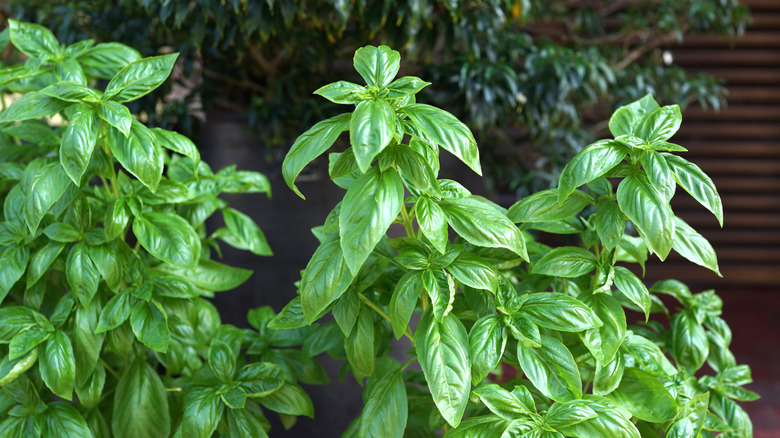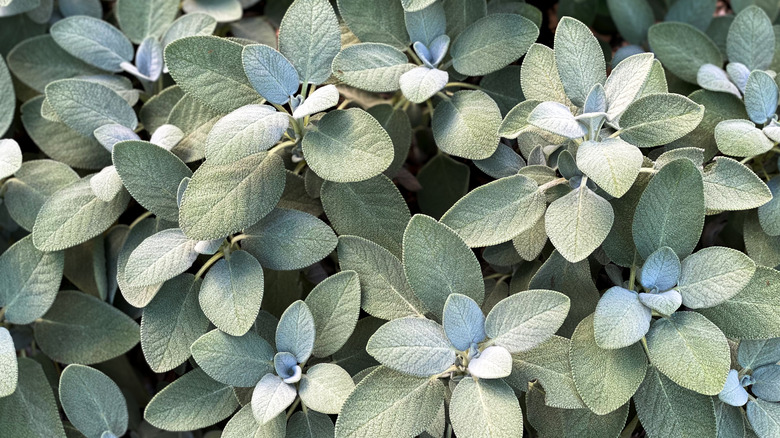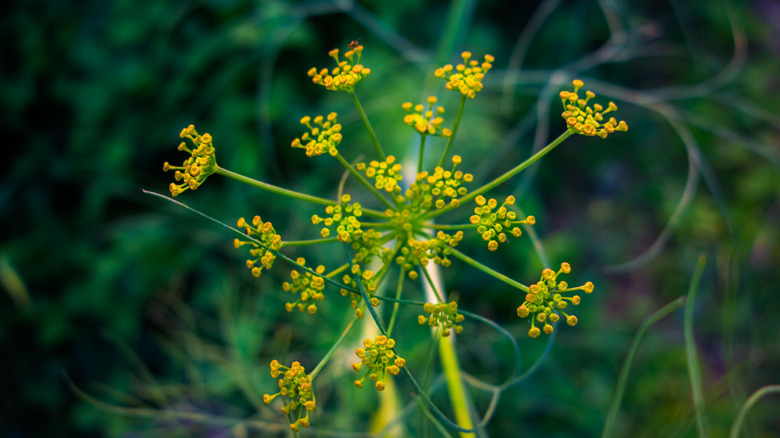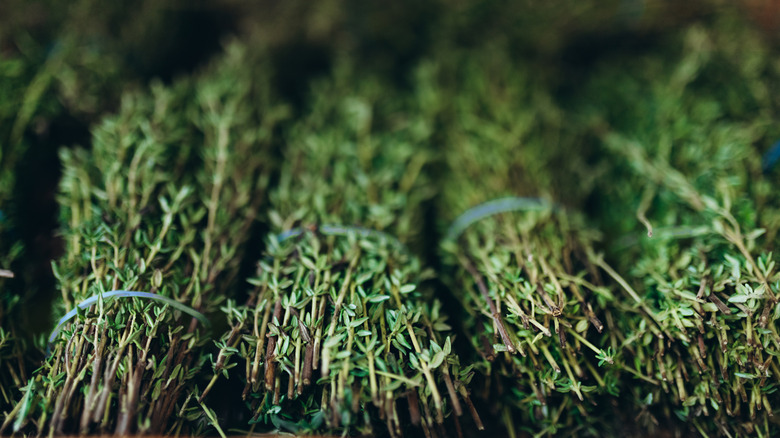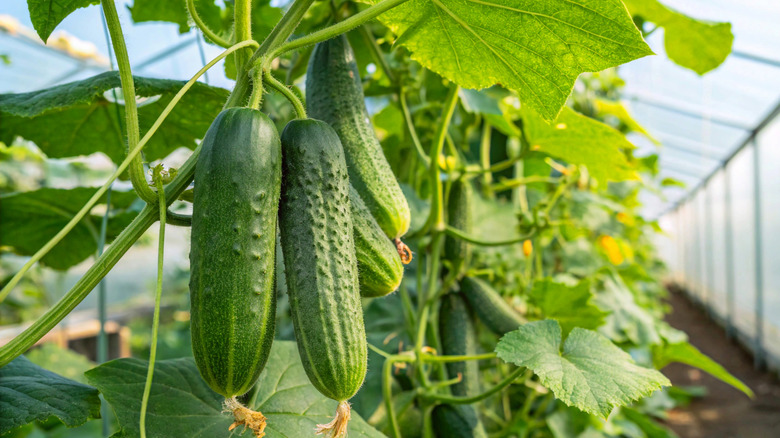Garden Herbs And Vegetables You Don't Want Growing Near Basil
Basil is one of the most popular herbs to grow and for good reason. It's fast-growing, flavorful, and known to support crops like tomatoes, mint leaves, and peppers by repelling pests and attracting pollinators. But while basil works well with many vegetables, it doesn't get along with every plant in the garden.
Some herbs and vegetables can compete with basil for resources like water, sunlight, and nutrients. Others may release allelopathic compounds — natural chemicals that interfere with basil's growth — or attract pests that quickly spread to nearby basil plants. Even when plants share similar care needs, differences in growth habits or space requirements can make them poor companions.
That's where companion planting comes in. While basil thrives when paired with the right neighbors, placing it near incompatible herbs or vegetables like cabbage, thyme, or sage can lead to smaller yields, flavor changes, or stressed, unhealthy plants. Knowing which plants to keep away from your basil can make a big difference, helping you avoid common mistakes and grow healthier, more productive herbs.
Sage can dominate basil in a garden bed
Gardeners who've grown common sage (Salvia officinalis) and basil side by side often notice that both plants seem to struggle. That's because sage and basil are fundamentally mismatched as garden neighbors. Basil thrives in moist, rich, and neutral soil, while sage prefers drier, well-drained conditions with a more alkaline pH.
This difference in water and soil preferences means one plant will always be stressed. Either the sage will be overwatered, or the basil will dry out. On top of that, both herbs produce strong essential oils that can release allelopathic chemicals. These compounds, while helpful for repelling pests, can also interfere with the growth of nearby plants, including each other.
Size is another issue. Sage grows into a shrubby, woody plant around 3 feet in width and length, which can overshadow smaller varieties of basil bushes that are only 1 foot in size. This lack of airflow and sunlight can lead to reduced growth and increased risk of mildew on basil's leaves. While sage has excellent companions like rosemary, strawberries, carrots, and brassicas, basil simply isn't one of them. Most herbs don't do well next to basil.
Fennel will sabotage basil's growth with its chemical defenses
Although both fennel and basil are aromatic and widely used in cooking, they don't make good neighbors in the garden. Fennel has a reputation for being difficult to grow alongside other plants, and basil is no exception. One of the main issues is that fennel produces natural compounds that affect nearby plants' ability to grow and absorb nutrients. This process, known as allelopathy, can disrupt basil's development, stunting its growth and reducing its overall vigor.
Fennel tends to compete heavily for soil nutrients and doesn't share space well, making it best suited to growing alone in a separate garden bed or large container. While fennel does have benefits, like attracting helpful insects and repelling pests, it should be kept at a distance from herbs that are sensitive to its chemical output. If you want both plants in your garden, give them plenty of space apart so they can grow well without interfering with each other.
Thyme can leave basil struggling in dry soil
Thyme is another plant that doesn't make the cut. These two herbs have very different preferences when it comes to soil and moisture, and when planted together, both can underperform. Thyme thrives in hot, dry environments with sandy or rocky soil and minimal water. Basil, on the other hand, prefers consistently moist, nutrient-rich soil with good drainage. When these two are placed in the same bed, you're forced to compromise one plant's ideal conditions to meet the needs of the other.
This might result in stressed basil, which is wilted from a lack of water or unable to absorb enough nutrients in dry, depleted soil. Still, thyme is a great addition to other parts of your garden. It pairs well with strawberries, cabbage, blueberries, and even roses, where it helps attract pollinators like honey bees and repels pests such as blackflies and aphids. Just be sure to keep it away from basil, parsley, cilantro, and other water-loving herbs that require very different growing conditions.
Cabbage and basil don't belong in the same garden bed
Cabbage and basil are both productive plants in a home garden, but they aren't suited to grow side by side. One of the main reasons is their difference in climate preferences. Cabbage grows best in cooler climates and is typically planted in USDA Hardiness Zones 2 through 9. Basil, on the other hand, prefers the warmth and is better suited for zones 10 and 11 unless you plan to bring it inside with cooler weather.
Cabbage is also susceptible to a range of pests, including cabbage loopers, maggots, and worms. While basil possesses some insect-repelling properties, it isn't particularly effective against the pests that commonly afflict cabbage. In contrast, herbs like dill, rosemary, and thyme are known to deter these specific pests, making them more suitable companions for cabbage. Meanwhile, basil is better suited to vegetables that like moist soil, such as tomatoes and peppers, that share its moisture and sunlight preferences.
Cucumbers compete with basil and may soak up its scent
Even though basil shares watering needs with many summer vegetables, it doesn't always get along with them in the same garden bed. A good example of this is cucumbers. While both plants prefer consistently moist soil, growing them side by side often causes more harm than good. Cucumbers are made up of over 90% water and have a tendency to absorb the scents and flavors of nearby aromatic herbs. When basil is planted too close, its strong essential oils can subtly influence the taste of the cucumbers, sometimes leaving behind a faint, unwanted herbal flavor.
In addition to the flavor issue, the two plants compete heavily for water and nutrients. Cucumber vines have large, fast-growing root systems and broad leaves that can quickly dominate a garden bed. They take up space, shade nearby plants, and pull significant moisture from the soil, leaving less available for basil. In tight planting situations, this competition can lead to smaller basil plants and lower cucumber yields. Picking the right companions makes all the difference when planning what to plant in raised vegetable beds.
